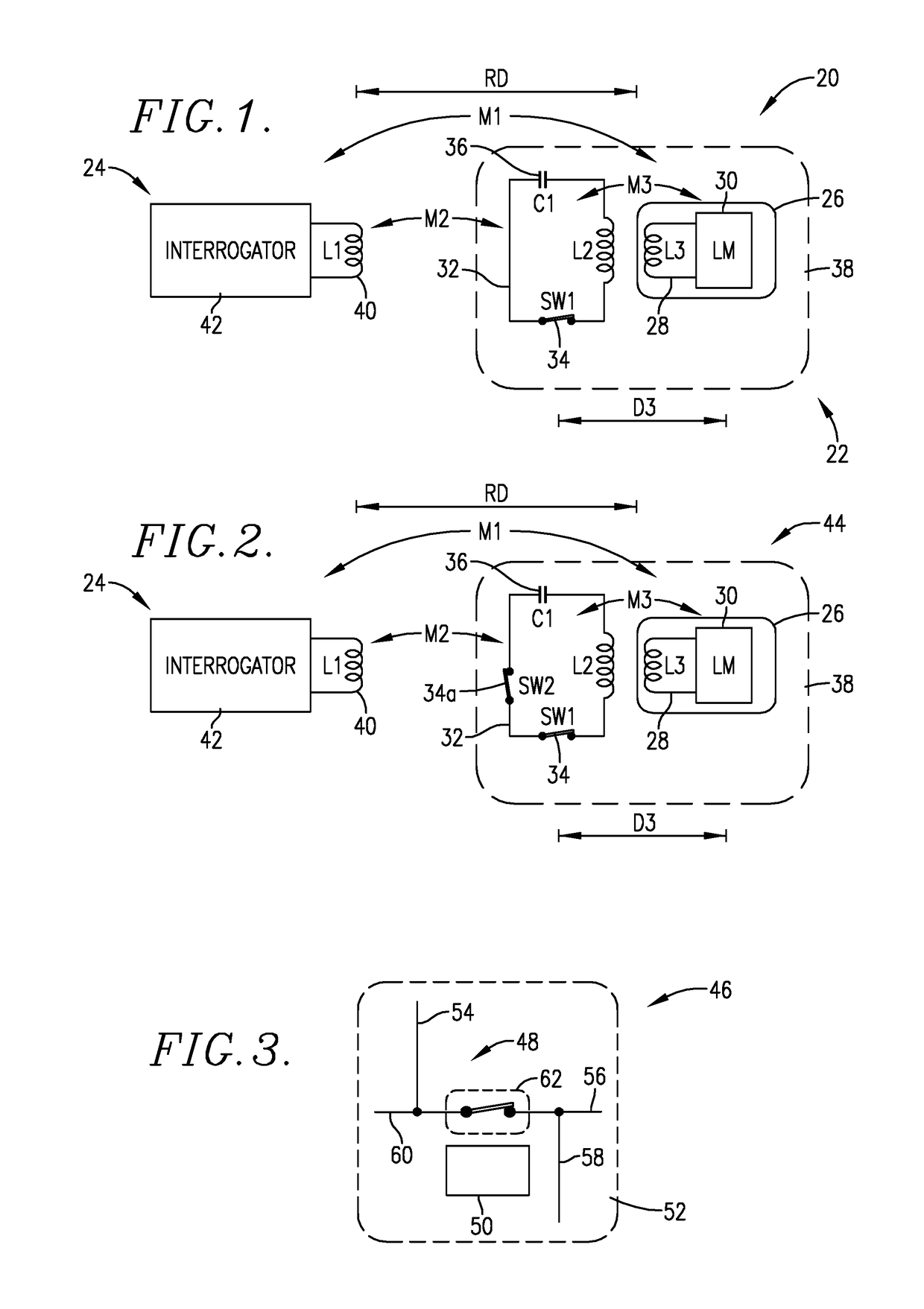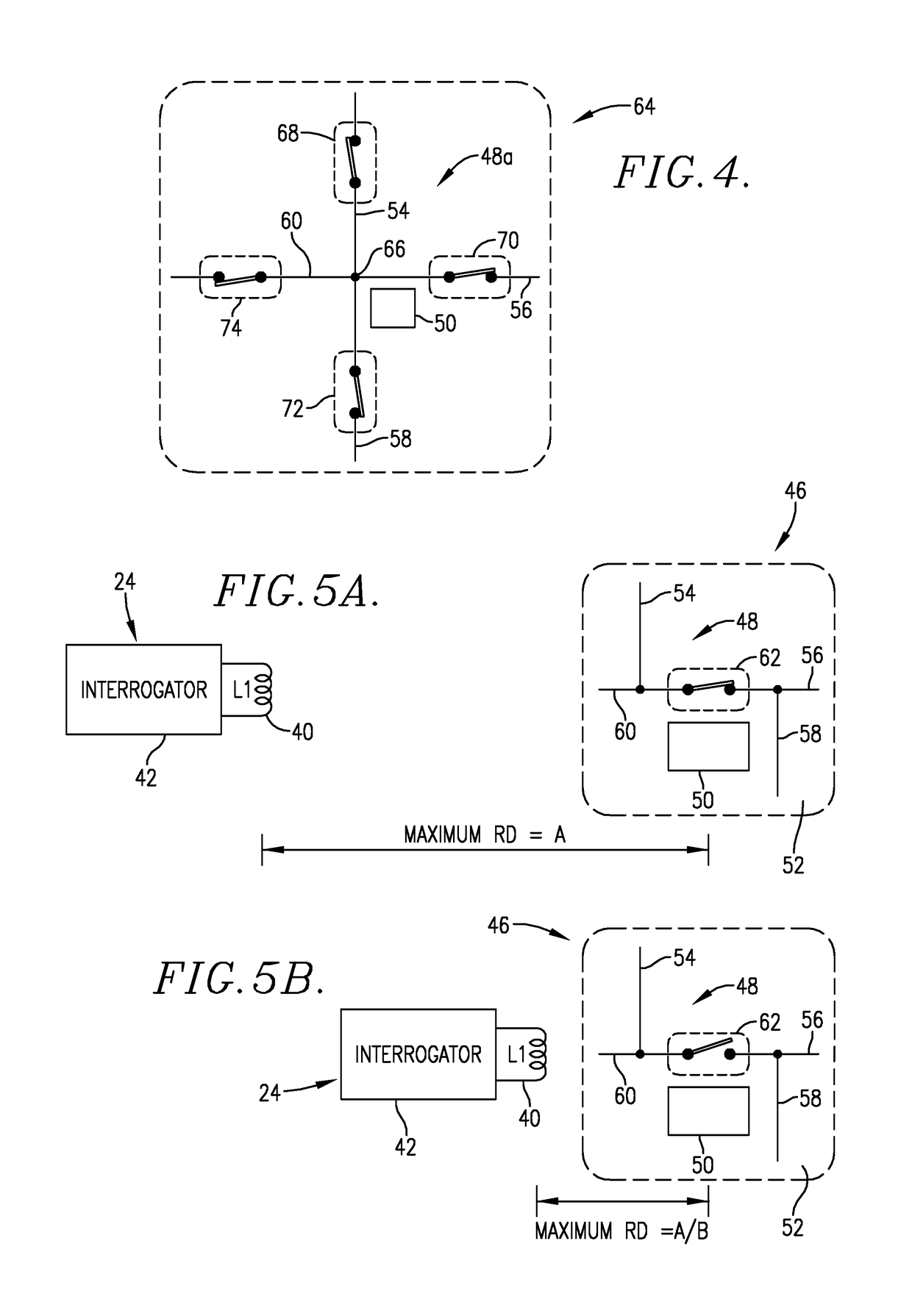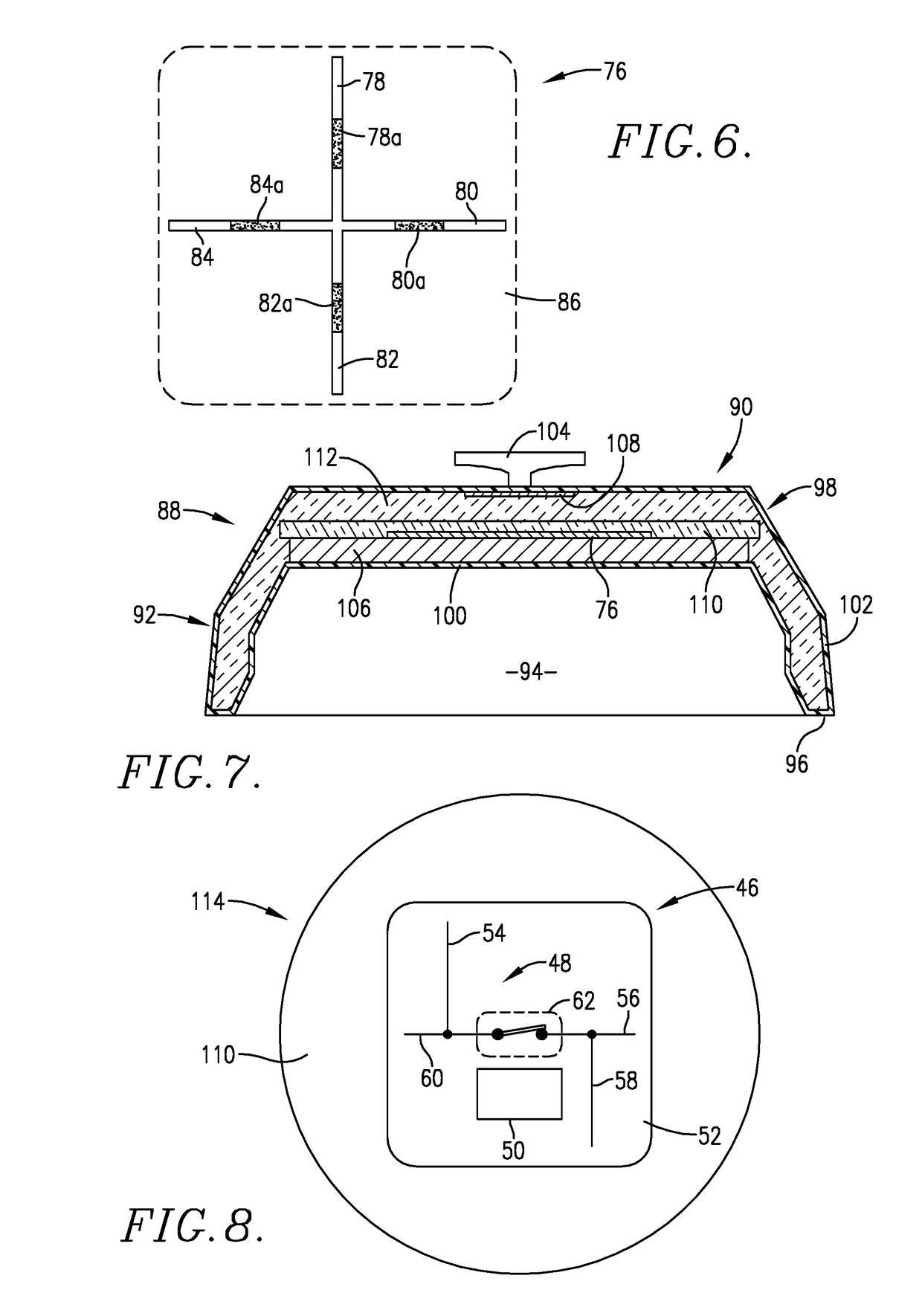Temperature measurement system employing an electromagnetic transponder and separate impedance-changing parasitic antenna
a technology of parasitic antenna and electromagnetic transponder, which is applied in the field of temperature sensors and temperature measurement systems, can solve the problems of difficult injection molding of the physical connection between the tags and switches is inherently delicate, and the difficulty of integrating such a tag/switch combination within an object whose temperature is difficult to achieve, so as to prevent any substantial lateral movement of the dome and rapid heating of the dome
- Summary
- Abstract
- Description
- Claims
- Application Information
AI Technical Summary
Benefits of technology
Problems solved by technology
Method used
Image
Examples
Embodiment Construction
Temperature Measurement Systems
[0029]Turning now to the drawings, FIG. 1, an exemplary temperature measurement system 20 is illustrated, which broadly includes a temperature sensor 22 and an interrogator 24. The sensor 22 is designed to be placed in effective thermal contact with an object whose temperature is to be sensed, whereas the interrogator 24 is a separate component in proximity to the sensor 22.
[0030]The preferred sensor 22 includes a transponder, here in the form of RFID tag 26, advantageously a UHF Tagsys AK5, which has the ability to be read and written, with 160 reprogrammable bits and 96 identification bits. The tag 26 has an antenna 28 of self-inductance L3 and a microcircuit 30 (labeled LM) coupled with antenna 28 and operable to extract energy from the antenna and to generate and convey a reply signal to the antenna 28, or alternately to another antenna (not shown). Additionally, the sensor 22 has a separate parasitic antenna 32 having a characteristic impedance va...
PUM
| Property | Measurement | Unit |
|---|---|---|
| resistance | aaaaa | aaaaa |
| total length | aaaaa | aaaaa |
| electrical resistance | aaaaa | aaaaa |
Abstract
Description
Claims
Application Information
 Login to View More
Login to View More - R&D
- Intellectual Property
- Life Sciences
- Materials
- Tech Scout
- Unparalleled Data Quality
- Higher Quality Content
- 60% Fewer Hallucinations
Browse by: Latest US Patents, China's latest patents, Technical Efficacy Thesaurus, Application Domain, Technology Topic, Popular Technical Reports.
© 2025 PatSnap. All rights reserved.Legal|Privacy policy|Modern Slavery Act Transparency Statement|Sitemap|About US| Contact US: help@patsnap.com



